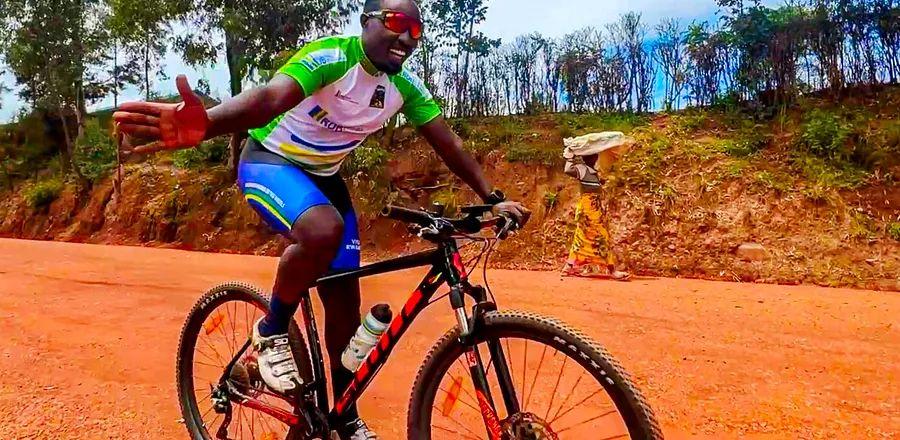I Spent 5 Days Biking Through Rwanda—Here’s Why It Was the Ultimate Way to Explore the Country

After biking about 10 miles along the rugged, 21-mile section of Rwanda’s Congo Nile Trail, which runs beside Lake Kivu, we realized that reaching our intended stop, Kinunu—named after a well-known coffee plantation—might not be possible.
“The bridge is out,” declared our local cycling guide, Callixte Gakire. As one of the founders of this 141-mile adventure trail, which stretches from Gisenyi to Cyangugu along Rwanda’s western edge, he is well-acquainted with its varying terrains, including its ups and downs, singletracks, and the subtrails established since it opened in 2009. I found myself there fifteen years later, dedicating five days of a weeklong trip to cycling through Rwanda’s picturesque villages, lush coffee farms, and multiple bridges—though weather-induced damage can often pose unexpected challenges.
Gakire assessed the situation carefully. Soon enough, he pointed out a shallow section of the river in the distance that we could cross on foot. Navigating down the large rocks, we rolled and carried our bikes to the riverbank. I removed my cycling shoes and socks to keep them dry, pushing my mountain bike through the cool water, which felt refreshing against my knees on such a hot, humid spring day.
As we made our way, curious children from a nearby village watched us with bright smiles. We often heard the cheerful shouts of “Mzungu!” (“Foreigner!”) from villagers waving a friendly hello.
Cyclists have long been a familiar sight in Rwanda, with a thriving cycling culture that has been developing since the 1970s. Prior to that time, bicycles primarily served as a practical means of transport and for moving goods and crops over short distances.
However, local friendly competitions gradually grew into a larger event on a national scale known as the Tour du Rwanda. Eventually, riders from other countries were invited to participate. With the race now recognized internationally by the Union Cycliste Internationale (UCI), cycling has become the second most popular sport in Rwanda, following soccer. The country boasts a strong national Rwandan cycling team that competes on the global stage, and hosts several annual cycling races of various types—road, mountain bike, gravel, and bikepacking. Notably, Rwanda is set to host the UCI’s World Cycling Championship in September 2025, further establishing its reputation as a premier cycling destination.

Photo by Erik Trinidad
As an enthusiastic cyclist, I wasn't in peak condition for a competitive race. However, Gakire, who has participated in numerous team tours, guided me and a small group of mountain bikers on a more relaxed, unofficial “Tour du Rwanda” encompassing five stages across various regions of the country (totaling about 100 miles). This custom tour aimed to showcase the beauty of this hilly central African nation. Rwanda’s rolling hills have earned it the nickname “Land of a Thousand Hills,” and there’s no better way to truly experience the majesty of these natural formations than on a pedal-powered bicycle.
“The most essential quality is courage,” Gakire stated, using the last word in French to inspire us.
I was ready for the challenge as he first guided us along an easy path from the palm-lined roads of Kigali out to the dusty village lanes in the countryside. From there, the rides became increasingly demanding, especially when we tackled a 9-mile ascent up one of Rwanda’s volcanic foothills. (Our tour took a break for a couple of days there to visit and be awestruck by the must-see wild mountain gorillas, which are unique to the rainforest of Volcanoes National Park.) However, the toughest cycling segment was a strenuous, rain-soaked 49-mile stretch of gravel roads with a 2,600-foot elevation gain, as we cycled from the misty northern volcanoes to the tropical shores of Lake Kivu in the west.
Despite the difficulty of some of the rides, Rwanda’s natural splendor motivated me, offering breathtaking views of lush tropical vegetation, undulating green hills, the occasional waterfall, and the tiny islands of Lake Kivu that appeared to float on the water’s surface. Yet, even more than the inspiring scenery, it was the people along the route who truly energized us, consistently cheering us on to keep pedaling.
“Amakuru!” we would greet passing villagers in their native Kinyarwanda, the common way to ask “How are you?” Sometimes the response was simply “Ni meza” (“I’m fine”), but often we would hear an “Amakuru” in return, or a cheerful “Hello!” in English, and once even a “Bonjour! Ça va?” in French. Regardless of the language, the intent of good cheer always transcended any barriers, motivating us forward.
A couple of young boys encouraged us as I put my socks and shoes back on after climbing up from the riverbank where the bridge had been. From there, the support continued as we biked the remaining eleven miles to Kinunu, which was not without its own challenging hills along the way. After all, it is the Land of a Thousand Hills.

Photo by Ryan Van Duzer
Important Information Before You Go
- How to reach Rwanda: The main airport is located in Kigali, the capital, where all tours, cycling or otherwise, begin. You can also find shops for bike rentals.
- Recommended tour operators: Several companies incorporate cycling into their travel packages—such as Rwanda Bike Tours, Cycle Rwanda Holidays, and Rwandan Adventures—taking care of bike logistics, support vehicles, and accommodation. Prices for tours lasting five days or more range from $1,200 to $1,600. While independent bike rentals are available at Kigali Rides or Tugende, joining a specialized cycling tour is highly advisable.
- Accommodation options: Spend a few extra days in Kigali and book a stay at The Retreat, a 20-room boutique hotel featuring locally crafted wooden furniture, private patios, and saltwater plunge pools.
Evaluation :
5/5



